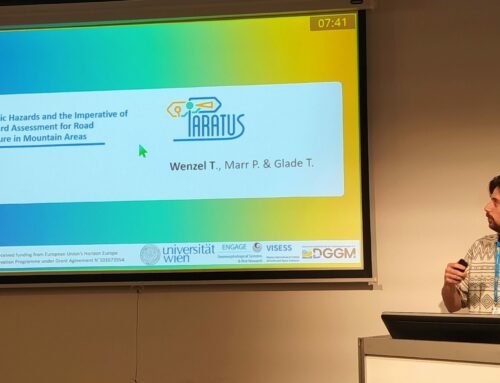The Global Flood Partnership had its annual meeting between 24 and 26 July 2024 in Nairobi, Kenya.
This years event was focused on EW4ALL: Strengthening resilience against flooding – Know, Monitor, Communicate, Respond! Context is that Early Warning For All, which is an ambitious initiative from the UN Secretary-General to have every person on earth be protected by early warning systems in before the end of 2027.
Bastian van den Bout, from the University of Twente was invited as keynote speaker on the developments of FastFlood, and the way in which it leverages smart algorithms and global datasets to bring easy-to-use and efficient flood modelling to new regions.

Wednesday
The first day started with a presentation by the chair of the global flood partnership, Albert Kettner, and featuring a variety of UNDRR and private company speakers. The general setting of the conference very much focused on a combination of private and public organizations, with some major global players, and the potential of rapid and global datasets in challenging areas for flood modelling.
NASA Servir, ACMAD and the world resources institute were present among other multi-national organizations, showing their innovative platforms and initiatives. NASA server has growing hub activity in Africa, with an increase in investments for the coming years.
In the afternoon, Bastian van den Bout had his presentation on FastFlood, with an intro about the PARATUS Project, and its aim to bring web-based decision making platforms to stakeholders in the multi-hazard and risk reduction fields. PARATUS was also present with a booth, where FastFlood was also demonstrated.
Thursday
There was a tour of ICPAC, a multi-national center for climate hazard and early warning. Their facilities were incredibly impressive, and features state-of-the-art computing clusters for meteorological forecasting, hydrological modelling and forecasting, and nowcasting/warning products for multi-hazard events. Their warning products are actively being used by a variety of East-African countries. There was a discussion on the potential of linking fastflood with their systems, which will likely continue in the coming months.
Friday
The final day featured more companies and universities (e.g. Phatom with their global flood maps, CIMA, University of Leeds, and more). The final discussion in the afternoon was plenary and attempted to find an answer to the question: How realistic is the EW4All goal?
While ambitious, major progress is being made around the world. And, while not fully achievable in 2027, major coverage is coming and a couple more years might be able to do it. Still, quality levels differ and unified standards and efforts for improving and sharing technological and data improvements should be a major focus. Finally, no early warning can work without community and communication. Community-focused efforts for adoption and awareness must weigh more and more in the coming years.





